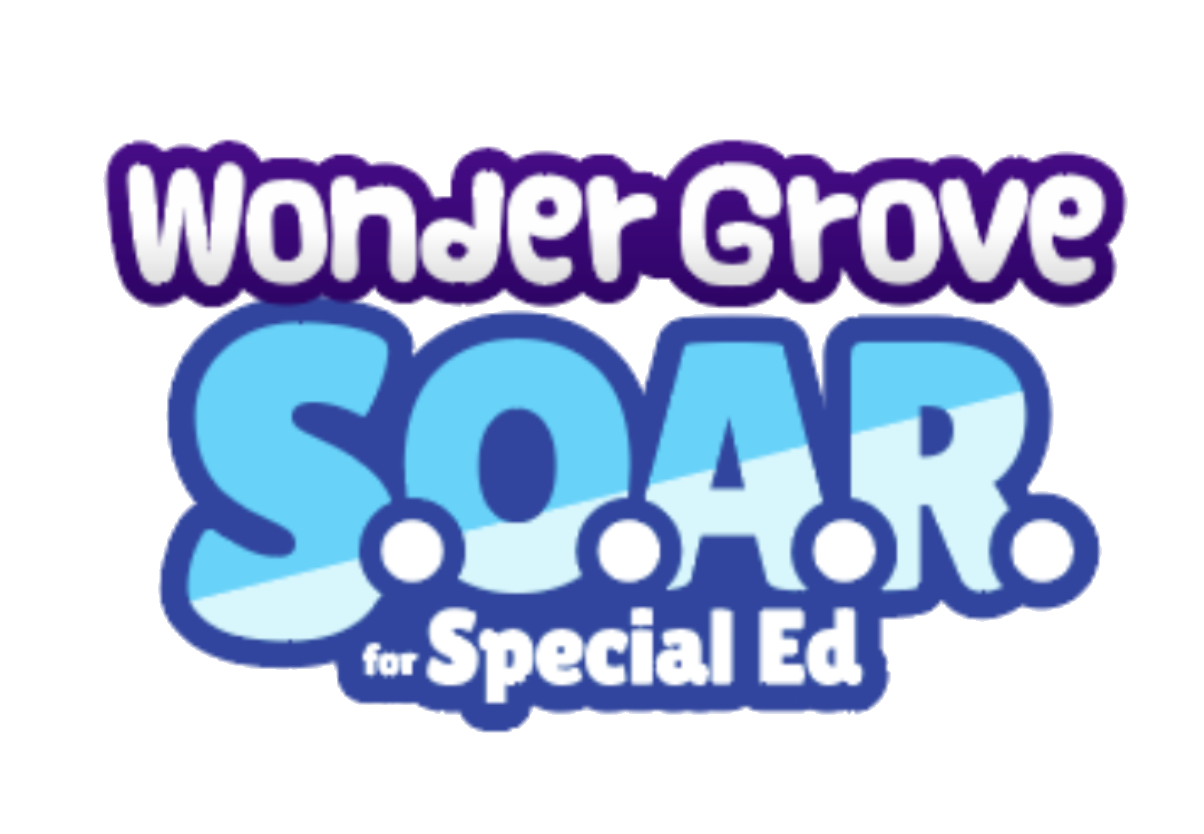Frequently Asked Questions
What is WonderGrove S.O.A.R.?
WonderGrove S.O.A.R. for Students with Exceptionalities is a program of 300+ instructional animations and 2000+ printable extension lessons for grades K-2. The videos and CCSS-aligned lessons cover social skills, life skills, social-emotional learning, health, creative play, and more. You can purchase yearly or monthly.
What is the difference between WonderGrove Social Skills and WonderGrove S.O.A.R.?
WonderGrove Social Skills and WonderGrove S.O.A.R. use the same 300+ high-interest animations for students of developmental ages 2-10. WonderGrove S.O.A.R. differs in that it is made for special education classrooms with extension lessons adapted for students with exceptionalities.
What are social skills for elementary students? How do I teach my child social skills?
Elementary students should have a solid basis of social skills so that they can thrive in school and in their relationships. This includes skills such as: being polite, sharing, basic hygiene, appropriate words, self-regulating emotions, keeping their hands to themselves, and respecting other people. WonderGrove S.O.A.R. teaches these skills through animations rooted in research.
Teaching your child social skills doesn’t have to be overwhelming! Common activities such as roleplaying, asking your child questions about how they're feeling, recognizing and understanding emotions in self and others, being a good role model, and taking turns are easy ways to promote social skills naturally. Social skills animations, such as WonderGrove, are a great way to engage young children and help them integrate social skills into their lives.
What are social stories and why are they used?
Social stories are used to model specific behavior and the desired outcome of a given social situation for a child. Social stories teach students a safe way to react to a given situation. Social stories are used to prepare a child to approach a familiar or new situation with confidence in the desirable choices to make. WonderGrove S.O.A.R. offers behavior modeling through animation.
What is a social story?
Social stories are stories of everyday life in which a child can see themselves and learn about how they should react. Social stories can be used to prepare children for experiencing something new such as Stay Seated in a Restaurant, or reinforcing desirable behavior such as Keep Your Hands to Yourself.
What are the components of a social story?
A social story is designed so that a student will identify with a given situation and learn the desired behavioral outcome. Social stories should set up a relatable and easily identifiable setting. Then, social stories should show the desired behavior as well as other reactions that could occur, before pointing to the desired behavior as the optimal outcome. Social stories should leave the viewer feeling empowered to take action in their own life that corresponds to the social story. Research has proven that children form relationships with animated characters and those relationships can improve their learning—this is the research that WonderGrove S.O.A.R. is based on!
Do social stories work?
Social stories have been used effectively for thirty years with young children and others with exceptionalities. Animation has been used in school effectively for even longer!
What are basic life skills? What life skills should I teach my child?
Life skills must encompass personal skills, the ability to care for oneself, communication/interpersonal skills, decision making and problem-solving skills, creative and critical thinking, empathy, self-control, resilience. WonderGrove has hundreds of animations modeling desired behaviors for school and home.
From preschool to second grade, children should learn safety skills (how to make an emergency call, bicycle and car safety), simple cleaning tasks (such as helping in the yard, putting away toys) responsibility (through pets, hygiene), how to use money, and the ability to dress oneself. After these basic life skills are met, children can begin to be involved in household organization, simple budgeting, and problem-solving discussions.
What are adaptive skills? What are some examples?
Adaptive skills are the practical skills that allow a person to thrive in the environment as independently as possible. Adaptive skills include hygiene and self-care skills (such as bathing, grooming, and eating), communication skills, problem-solving/decision making/planning, maintain friendships, understanding emotions and social cues, obeying rules, taking personal responsibility, housework including cooking and cleaning, and foundational academic skills that are prerequisites to independence such as writing one’s name and counting money. WonderGrove S.O.A.R. offers hundreds of instructional animations that model appropriate behavior and social and life skills.
What are adaptive skills for preschoolers?
Adaptive skills for preschoolers are the skills that allow them to thrive successfully and independently in their home and classroom. These skills will look different for every child. Some examples include getting dressed, basic hygiene, and fundamental communication skills.
